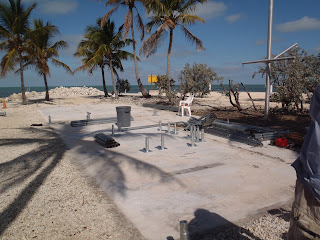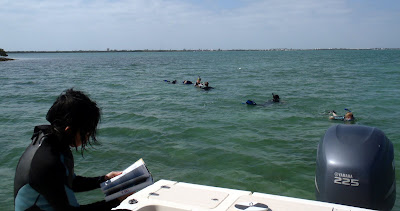

It all started with a pile of pipes and boxes of screws on the concrete pad.
One half done, tackling the second set of arches
Bill and Dave have worked pretty much non-stop since the delivery of the base plates. Several of the FWRI Marathon office crew came up to give us a hand for 2 days and that was a huge help - Thanks Bryan, Chris and Nick!
















